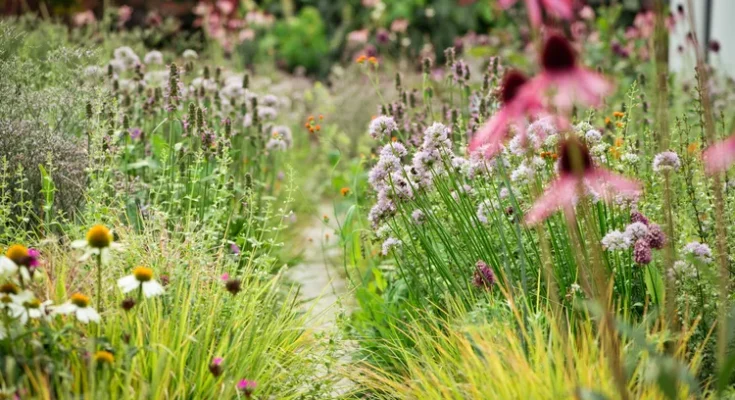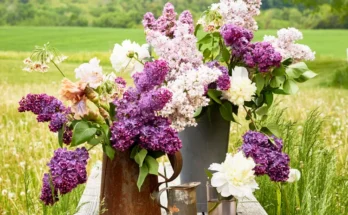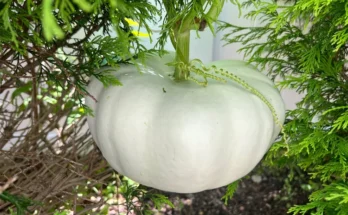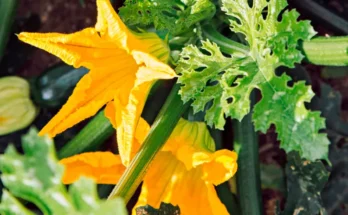Leave traditional bouquets behind with this beautifully-imperfect style.
Keeping fresh flowers in the home will never die off—but perfectly-manicured bouquets might, as the casual beauty of wildflowers begins to spread. Decorating your table with a selection of mismatched blooms brings nature into your home while giving off a more effortless, playful feel—and right now, extra whimsy is needed.
Instead of carefully curating a bouquet of roses or another single flower, have fun with color, texture, and height to create a stunning wildflower centerpiece. Summer is the perfect time to embrace this trend too, especially if you have an abundance of flowers in your garden to experiment with. Regardless, here are all the tips we’ve gathered on getting started.
Why Is Wildflower Decor Trending?
If you have your own garden, decorating with wildflowers can be more accessible and affordable than visiting a florist. Many grocery store bouquets also lean into the wildflower trend by offering mix-and-match arrangements created with in-season blooms. Wherever you find them, they offer a fresh alternative to traditional floral styles.
“Part of what’s happening here is a shift in trends—floral trends come and go, just like fashion trends,” says Justin Lievano, floral design manager at UrbanStems. “But I also think wildflowers feel rebellious and fun compared to more traditionally staid arrangements.”
Think about wedding florals: more formal occasions tend to have carefully-styled, perfectly matching arrangements.
“I actually saw a really fascinating TikTok recently about how prominent athletes almost have very lush and compact florals at their weddings,” Lievano adds. “That look is a projection of what the bride and groom imagine ‘wealth’ or ‘class’ looks like in flowers. More wild designs make people feel like they’re breaking away from these signifiers of traditional beauty.”
How to Decorate a Table Using Wildflowers
Wildflower centerpieces are your answer when you don’t want to settle for just one or two blooms for your dinner party tablescape. And if you tend to rely on the same flowers over and over, incorporating wildflower decor breaks you out of your tried-and-true arrangements.
“First, the more variety, the better,” Lievano says. “The aesthetic of a wild meadow is well served by lots of mixed varieties of florals, not just your traditional blooms, like roses and carnations. Think about adding in a variety of textures, too—a wildflower arrangement is a great time to experiment with less traditionally-pretty blooms, like thistle flowers.”
For a true wildflower arrangement, keep in mind what grows in your area. And don’t be afraid to use greenery—Lievano tries to use two to three types in each of his designs to get an organic look. Stay away from traditional fillers like baby’s breath, and instead incorporate greens like mixed eucalyptus or even rosemary stems.
“Avoid large woody stems and tropical flowers,” Lievano says. “Heavy stems like hydrangea or roses will throw off the look of a wild and naturalistic arrangement. Think in terms of smaller, more delicate stems like ranunculus, spray roses, veronica, cosmos, miniature gerbera daisies, and so on.”
Where to Get Your Wildflowers
You can skip the trip to the florist: Cut blooms from your own garden, even if you aren’t growing traditional cutting flowers, or pick up a mismatched variety from your local grocery store. While he doesn’t always encourage foraging, Lievano notes this would be the opportune moment for it. Wild textural stems like goldenrod, Queen Anne’s lace, sea oats, and more can be harvested from the side of the road.
“Don’t raid anyone’s yard, of course, but you can gather some flowers that other people consider ‘weeds’ very easily,” he says. “Also, wherever you shop for flowers, give yourself the exercise of ignoring the blooms you might traditionally gravitate toward. Skip the roses, the peonies, and see what else your local market or flower shop has to offer. You can find genuinely unique and beautiful stems that you might not have noticed before.”
Tips for Arranging a Wildflower Bouquet
While using wildflowers might help you break out of your floral comfort zone, once you’ve chosen your blooms, you can still rely on traditional bouquet-arranging strategies to get a beautiful centerpiece, not a random collection of greenery and petals. Add structure to your bouquet and help hold flowers in place by using floral foam (or sustainable alternatives), or by lining the top of the vase with tape or chicken wire to create distinct zones.
Choose one or two flowers as the focal point, then use an odd number to surround them for balance. Fill in with smaller supporting flowers and greenery, especially around the edges of the vase to help the arrangement look lush and full. Finish with your smallest, most delicate flowers to prevent crushing them as you arrange the centerpiece.
Using structure might seem like it goes against the wildflower trend, but it gives your arrangement the right level of polish to make it look intentional.
“Wildflower decor can give you more material freedom than, say, a paved design of roses, but you still have to abide by certain artistic principles—rhythm, balance—or else your design will just look like a big mess,” Lievano says. “But I do think this kind of wildflower decor increases our appreciation for the variety and beauty of the natural



